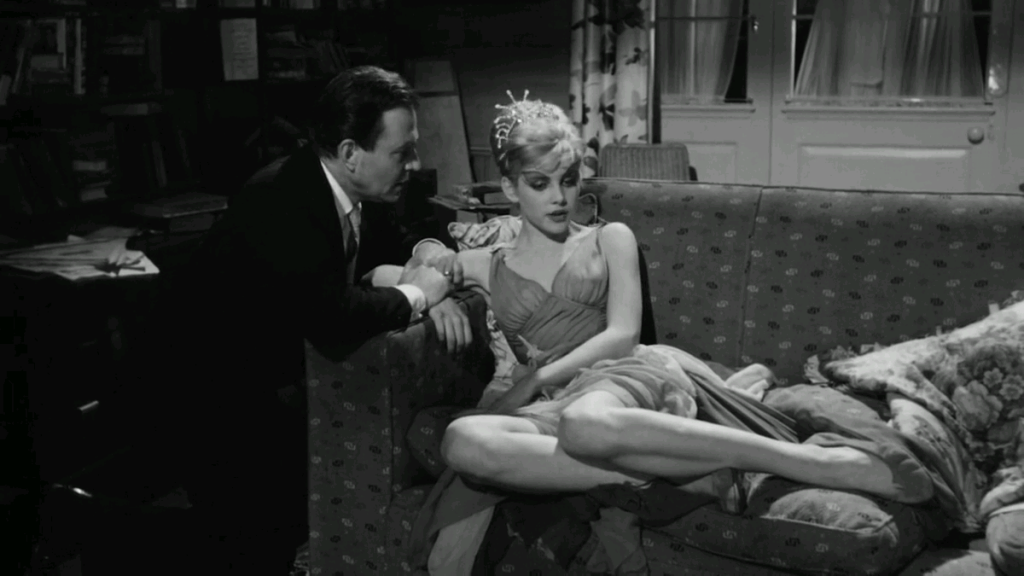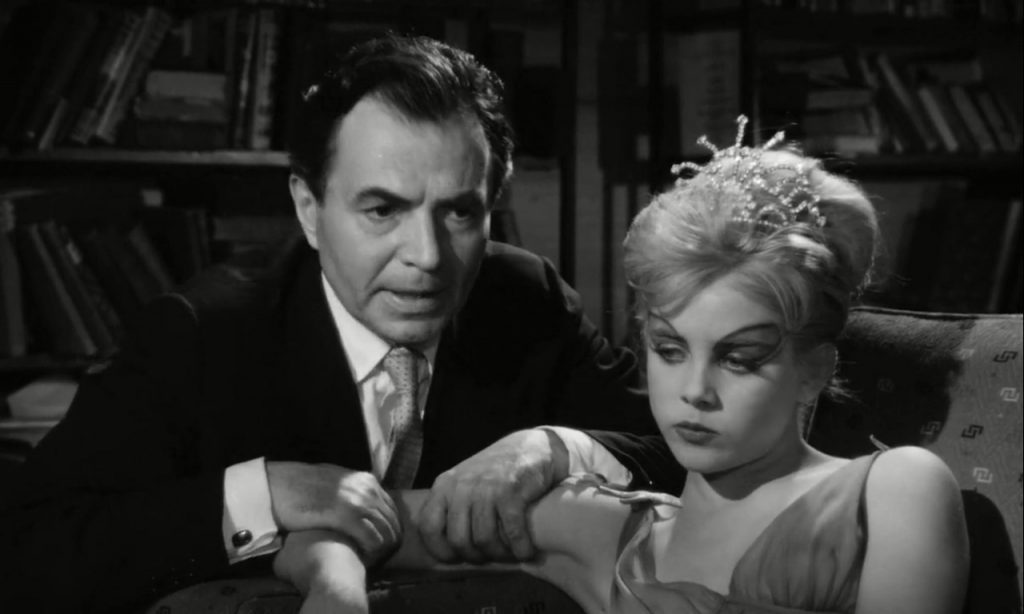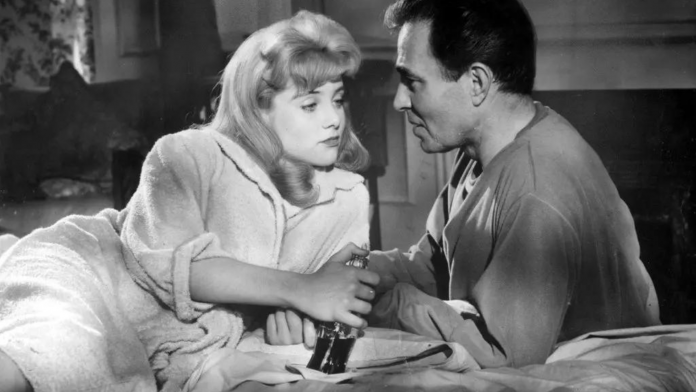Movie Monday: Film Recommendations By Our Contributors
I was seventeen, consumed by a need to be unique and a wish to find a controversial yet critically acclaimed book, when I first got my hands on Vladimir Nabokov’s Lolita. Disturbing on the one hand and completely captivating on the other, the story intrigued me beyond what had been written in it and stayed with me long after I had read it. A few years later, I attended an exhibition of Kubrick’s work. There, I saw a movie scene that looked exactly like the romanticised image of Lolita I had internalized. Noting that it was indeed from a visual adaptation of Nabokov’s novel, I knew I had to watch it.

Set in the United States in the 1950s, the movie is characterised by opulent visuals and a sophisticated elegance. The atmosphere is slightly chaotic, yet rigid at the same time. It is an account of Humbert Humbert (James Mason), a middle-aged literature professor who becomes pathologically obsessed with his enamoured landlady Charlotte Haze’s (Shelley Winters) fourteen-year-old daughter Dolores, nicknamed Lolita (Sue Lyon). Humbert marries Charlotte out of his desire to be as close to the girl as possible, and becomes trapped in an unfulfilling relationship. He is finally comforted when his wife is (conveniently) fatally hit by a car while Lolita is away at camp. Freshly regarded as Lolita’s sole guardian, full of tangible hope, and free to raise the girl as he pleases, Humbert picks the teenager up from camp and travels with her around the country. In the following months, they start an affair, she learns the truth, they move, and drive around some more. Their relationship is distinctly flawed, and her abrupt disappearance amidst their aimless wandering comes as no surprise. Three years later, they meet again. She is married and pregnant, while he is broken and ready to kill.
The movie is a situational comedy and an emotionally charged tragedy all at once. It is an artistic cinematic piece, defined by long shots of constant movement followed smoothly by the camera, with contrastingly sharp and harsh transitions between scenes. The film as a whole consequently seems somewhat fragmented and clumsily edited. Different parts of the storyline are connected by Humbert’s calming English narration that takes you to an alternative reality. Suddenly, you are in the 1960s, listening to the radio, driving your red car, wearing a bandana and oversized sunglasses. This over-the-top feeling accompanies the viewer throughout the entire picture. The glamorous styling as well as the picturesque filming locations and attention to detail are simply beautiful. The acting is grand and exaggerated, marked by great gestures and a remarkable, elite language. The characters are quite one-dimensional, each based on a single prominent trait, which somehow adds to the amusing nature of the movie. Aside from caricature-like roles, comic elements also include the characters behaving in a disorganised manner, using excessive alliterations, and often stating the obvious. Although these features visualise the satirical aspects of the book, they disregard the alarming ones.
In the novel, Nabokov describes Lolita as a child and Humbert as a troubled hebephile. In the visual adaptation, however, Kubrick portrays her as a lust-inducing young lady and him as a helpless man who cannot resist her charms. She is the perfect combination of provocative demeanor, light flirtation, and alluring confidence—an attractive, independent, and rebellious soul who evokes a sense of admiration. He is miserable, tense, and alert, oftentimes delusional and detached from all morals as soon as he receives an opportunity to pursue the child. He takes advantage, controls, and restricts Lolita, but Kubrick frames her as the one perpetually using him.

Instead of presenting Lolita as an immature nymphet, Kubrick changes her into a sensuous, mischievous woman. Instead of making Humbert appalling, Kubrick paints him as a weak man deserving of sympathy. The characters were depicted in line with what the public would deem acceptable, not with what was written in the book. Appropriate to his zeitgeist and its censorship policies, the director avoided shooting overtly erotic scenes, only subtly suggesting the sexual and abusive nature of the central relationship, and fetishised Lolita as an alluring adolescent rather than a little girl. He was forced to respect the ethics of the 1960s and therefore kept most of the explicitly problematic content implied rather than shown directly. He did not concretely problematise their affair but instead turned it into a light-hearted drama, only faintly touching upon issues such as paranoia, gaslighting, and restricting one’s partner.
The societal expectations and judgements of the time limited the dimensions of artistic expression depicting such pathological inclinations. Kubrick created a risk-free movie about an abnormal entanglement that would otherwise be impossible to make. However, he reduced the significance of the abuse by reframing the main relationship, victimising Humbert and painting Lolita as partially culpable for their destructive dynamic. Troublesome in its carefree portrayal of serious molestation, the film fails to emphasise Lolita’s childish and helpless naïveté as well as the damaging consequences of Humbert’s actions. The child’s alienation, suffering, and trauma remain hidden, diminishing the importance of understanding the effects of emotional and sexual assault. Compared to the novel, the picture is tame and uncontentious, and received mixed reactions from the audience.
Some critics called it a masterpiece; a brilliant, respectful, and fascinating satire. Others were less impressed, deeming it monotonous, timid, and mediocre, while some called it inappropriate and even potentially harmful. In order to be screened in mainstream cinemas in the United States, the film had to undergo some changes. It has become an everlasting classic in pop culture. It pushed the boundaries of filming and shaped the public opinion of what could be dealt with in movies. What was once frowned upon has become a commercialised expression of sexuality. The aesthetic of heart-shaped glasses, bubblegum, and lollipops has become a widely celebrated symbol of nonchalant sex appeal.
Lolita is a fresh interlude among conventional, stereotypical, and cliche Hollywood movies. It is a quirky work of art dealing with taboo themes of psychopathology and abuse in an almost carefree manner. Even though it is not particularly shocking or terribly controversial (in its style anyway), it is nevertheless a compelling classic. It is worth watching for its aesthetics, wit, and influence.
Words by Lara Lovrič
Support The Indiependent
We’re trying to raise £200 a month to help cover our operational costs. This includes our ‘Writer of the Month’ awards, where we recognise the amazing work produced by our contributor team. If you’ve enjoyed reading our site, we’d really appreciate it if you could donate to The Indiependent. Whether you can give £1 or £10, you’d be making a huge difference to our small team.
